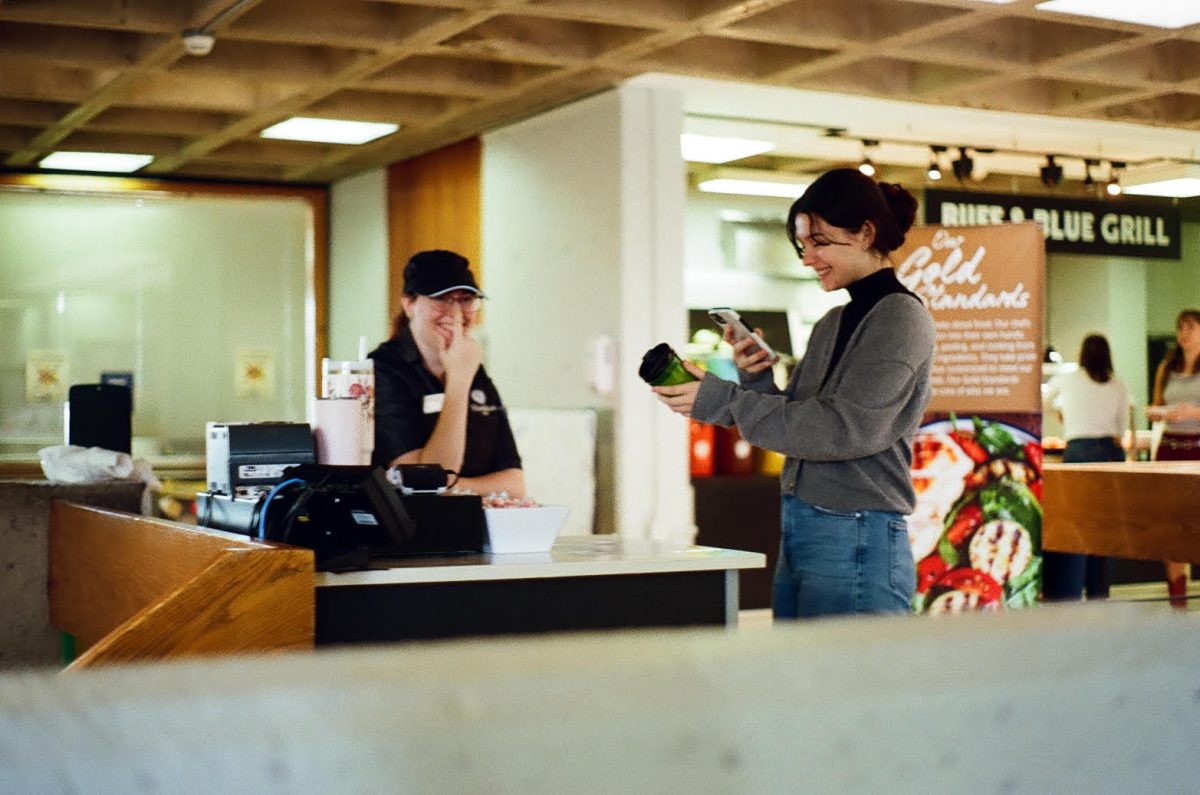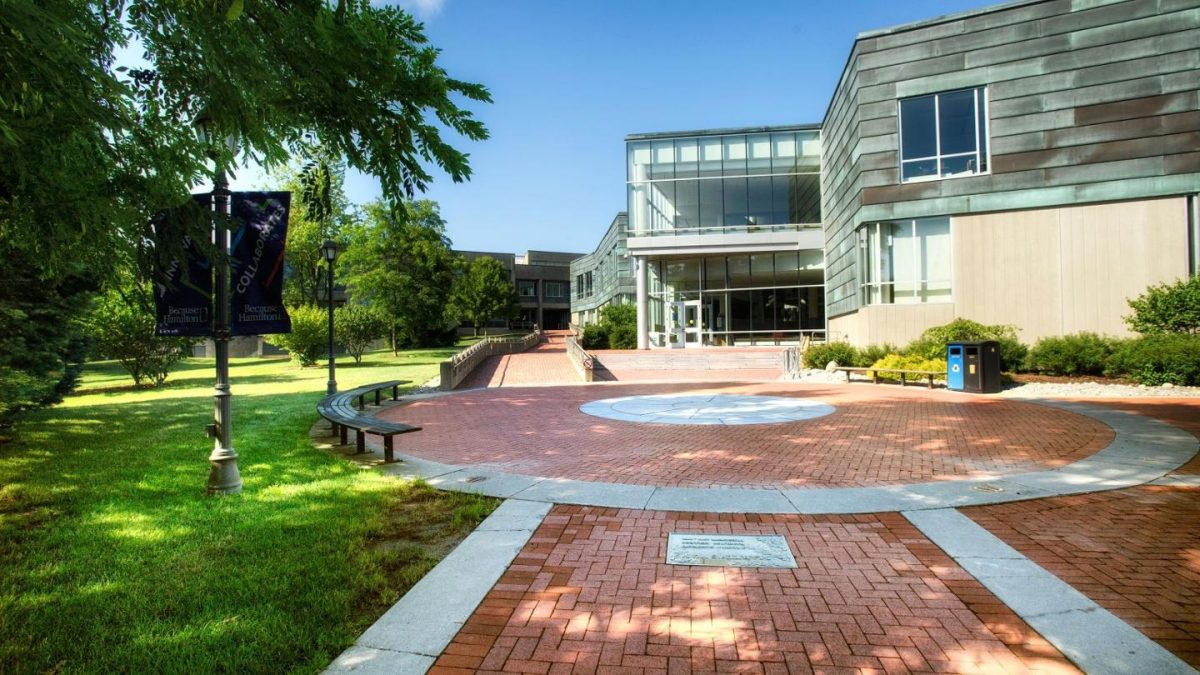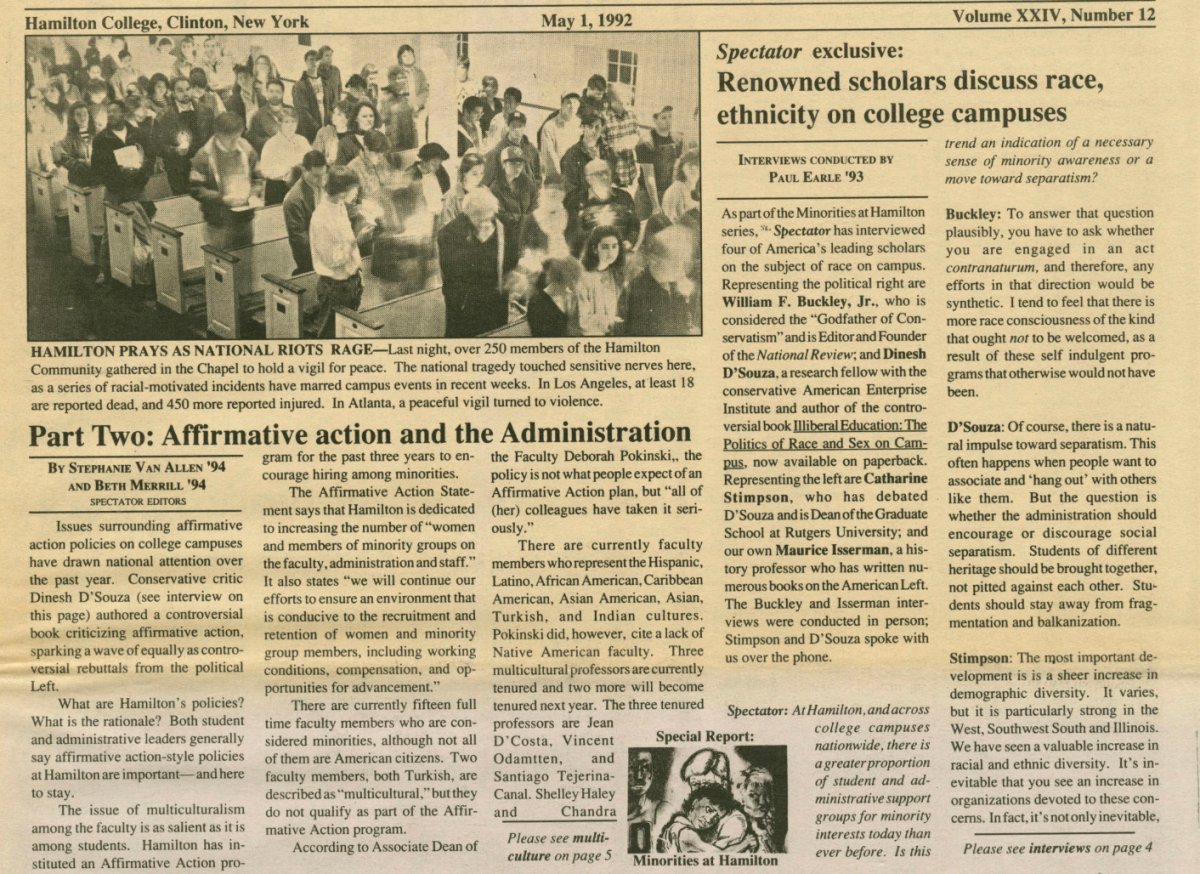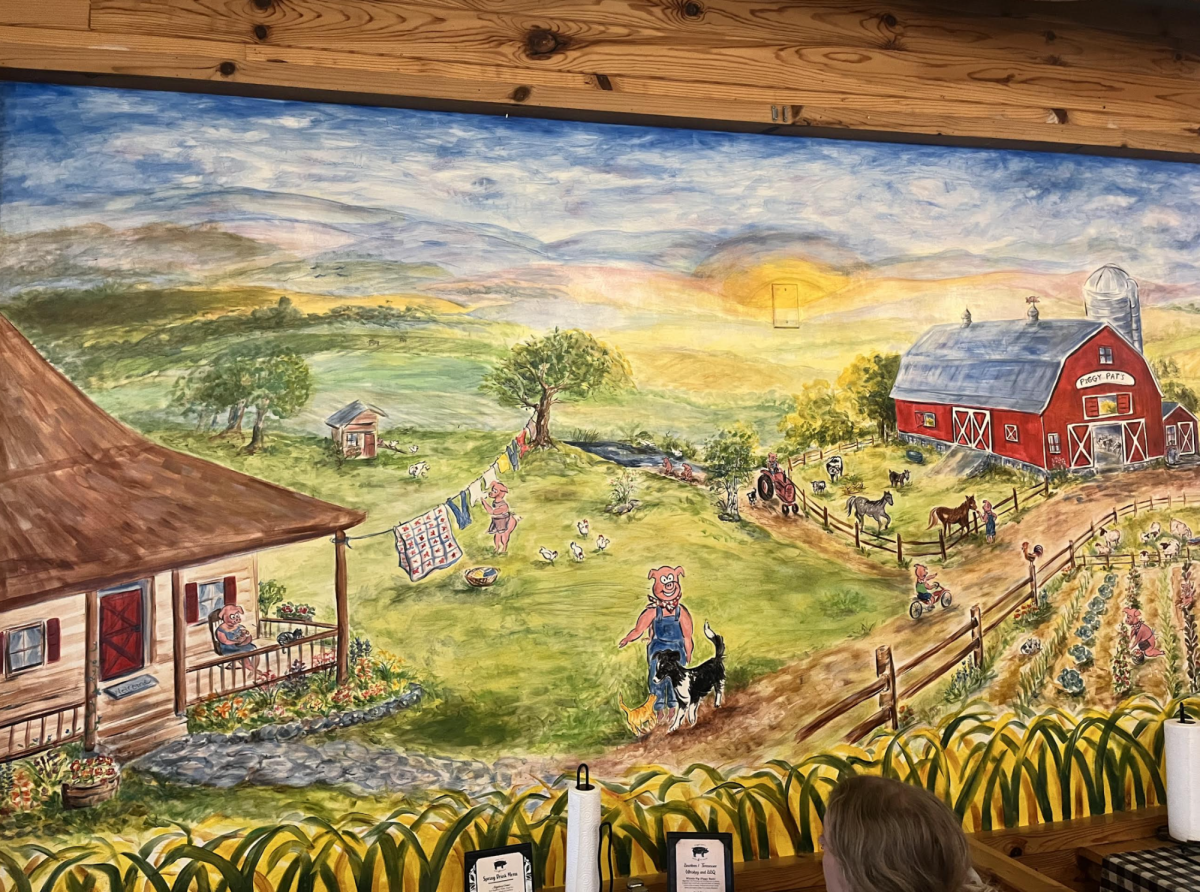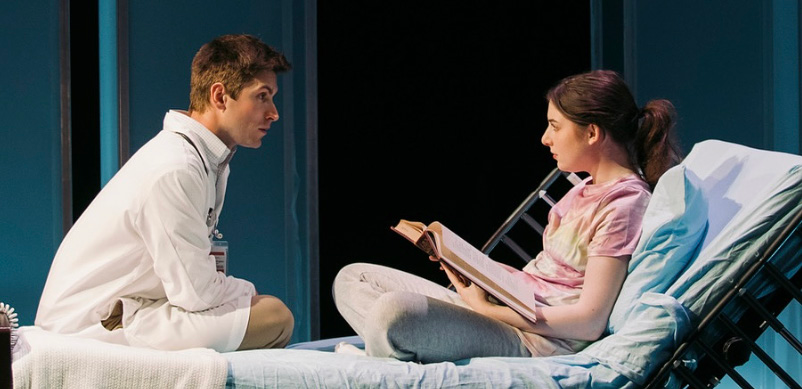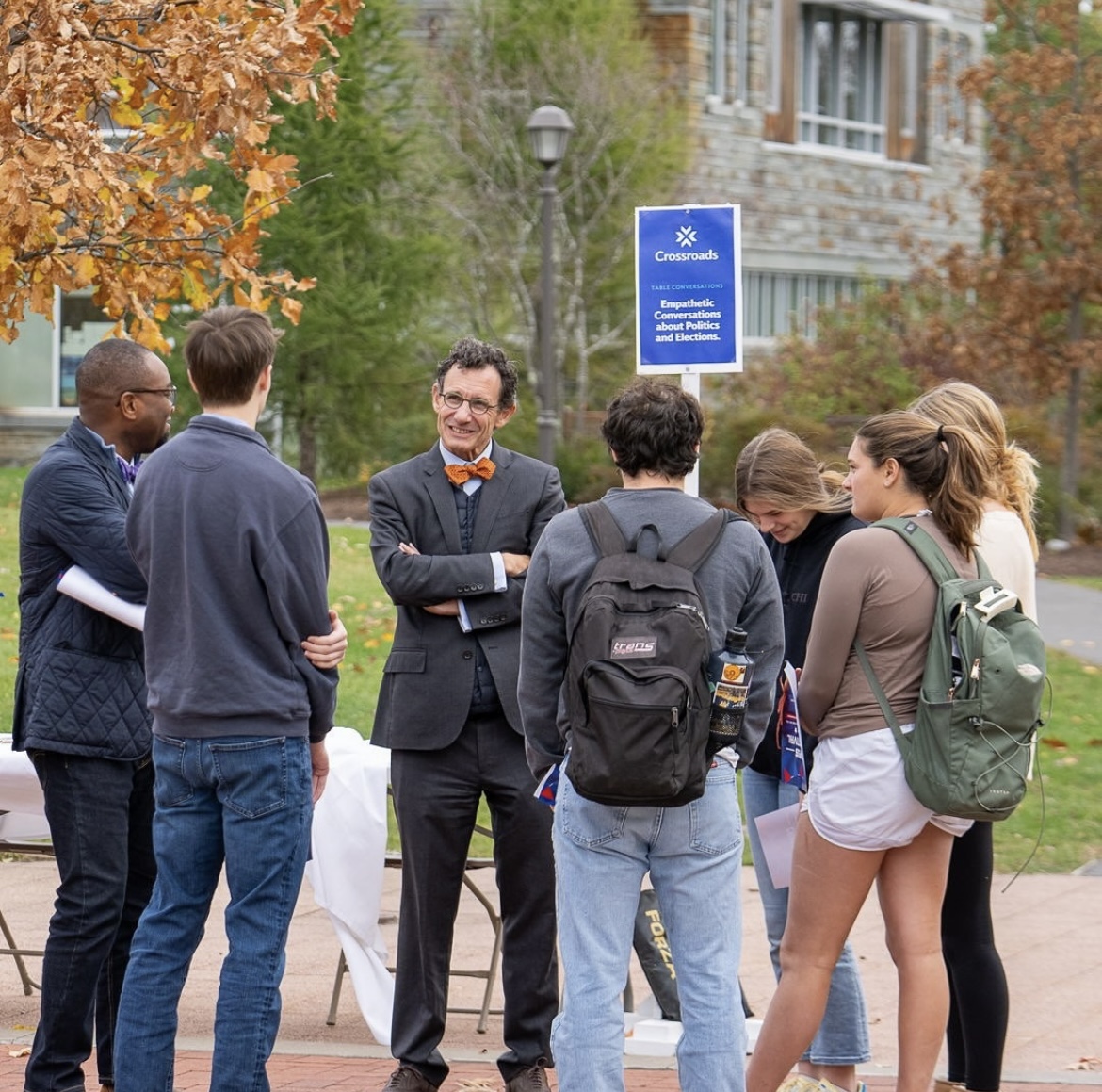
Next time you’re on the Darkside, look up. You’ll notice the overall flatness of every building’s roof. If you look at a map of campus it is clear that a large portion of our buildings do not peak at their tops.
Have you ever been to the top of Darkside buildings? I certainly have not, and by the area of Kirner-Johnson, Schambach, and the Art Center’s flat tops are lots of unused spaces. Think of the possibilities that recreational, educational, and wellness programs could all incorporate with these peculiar spaces.
The Hamilton College campus does not necessarily utilize its spaces well; many areas go unused, or forgotten. Perhaps it is time to take note from communities in cities and small towns and begin to look for more creative and useful ways to use our buildings. As a lover of dirt and soils of all types and densities, the one idea that pops out to me is the possible incorporation of rooftop gardens.
A largely-new phenomenon, urban farming utilizes the flat and exposed tops of urban buildings to grow and produce vegetables, as well as other organic goodies. These ventures are relatively easy to set up and can range in size from just a couple vegetable beds to large-scale farms on par with small family farms in the northeast. As the world becomes more and more strapped for land, rooftop farming has opened up new avenues and ideas to provide nutrition to local areas.
Green roofs offer many benefits, both practically and mentally. Green roofs help capture stormwater, stemming the flow of water and the buildup of squishy grass on the ground. A green roof also absorbs less heat than a non-green roof, keeping dorms cooler in warm weather.
Beyond just environmental reasons, a green roof could be a great place for students to unwind, learn about agriculture, and promote mental health. On Hamilton’s campus — where there is a large disconnect between students and the environment — green roofs would offer an excellent and easily accessible connection to the natural world.
As the College embarks on the process of creating a new Environmental Studies department, a rooftop garden would provide valuable and practical experience for students of the field by offering many chances to try new experiments and techniques for farming. New York City — one of the centers of the urban farming revolution — receives the largest amount of recent Hamilton grads. Experience with urban farming during college would translate well to many graduates looking for employment in the city.
Other city areas have embraced the agricultural revolution; any large metropolitan area in the United States has new opportunities for those hopeful to make a career in urban farming. Rooftop gardens would add on to the invaluable academic and professional experience that Hamilton provides for its student body.
The College has no shortage of ways to embrace the natural world. Three Glens that account for almost 1,000 acres of the 1,300-acre campus with a registered arboretum and countless grassy quads provide students with any number of ways to seek peaceful refuge. Roof gardens would complement these spaces by adding another way of unwinding in green areas. The outdoor recreational areas of campus are largely unsuitable for doing homework. Roof gardens could be a perfect way to give students an outside study space that would be connected to the wifi generated from the building they are perched on. On top of that, picnic tables and other furniture would be easy to set up with no need for mowing around them. The roof gardens would provide quiet, private work spaces away from busy, noisy areas like Martin’s Way or the Opus porch.
The quiet and pleasant nature of a roof garden also promotes general well-being and mental health. With anxiety and mental illnesses increasingly observed on college campuses, providing services to calm and relax students has never been more important. The variety of rooftop gardens leaves a multitude of options on the table in incorporating mental health initiatives in engaging ways. Anything from yoga on the farm to therapeutic weeding represent viable options to get students more involved in wellness initiatives. Where many people would be scared to enter the Health Center, countless people would gladly get their hands dirty picking juicy tomatoes or zucchinis, or simply sitting near a bed of bright flowers.
Overall, the idea of a rooftop garden presents many valuable additions to the Hamilton College campus. Their inclusion on our campus would represent the College’s commitment to sustainability and experiential learning. Roof gardens would present no major change or cost to start, and offer a much more exciting alternative to the boring and unused rooftops currently standing.



